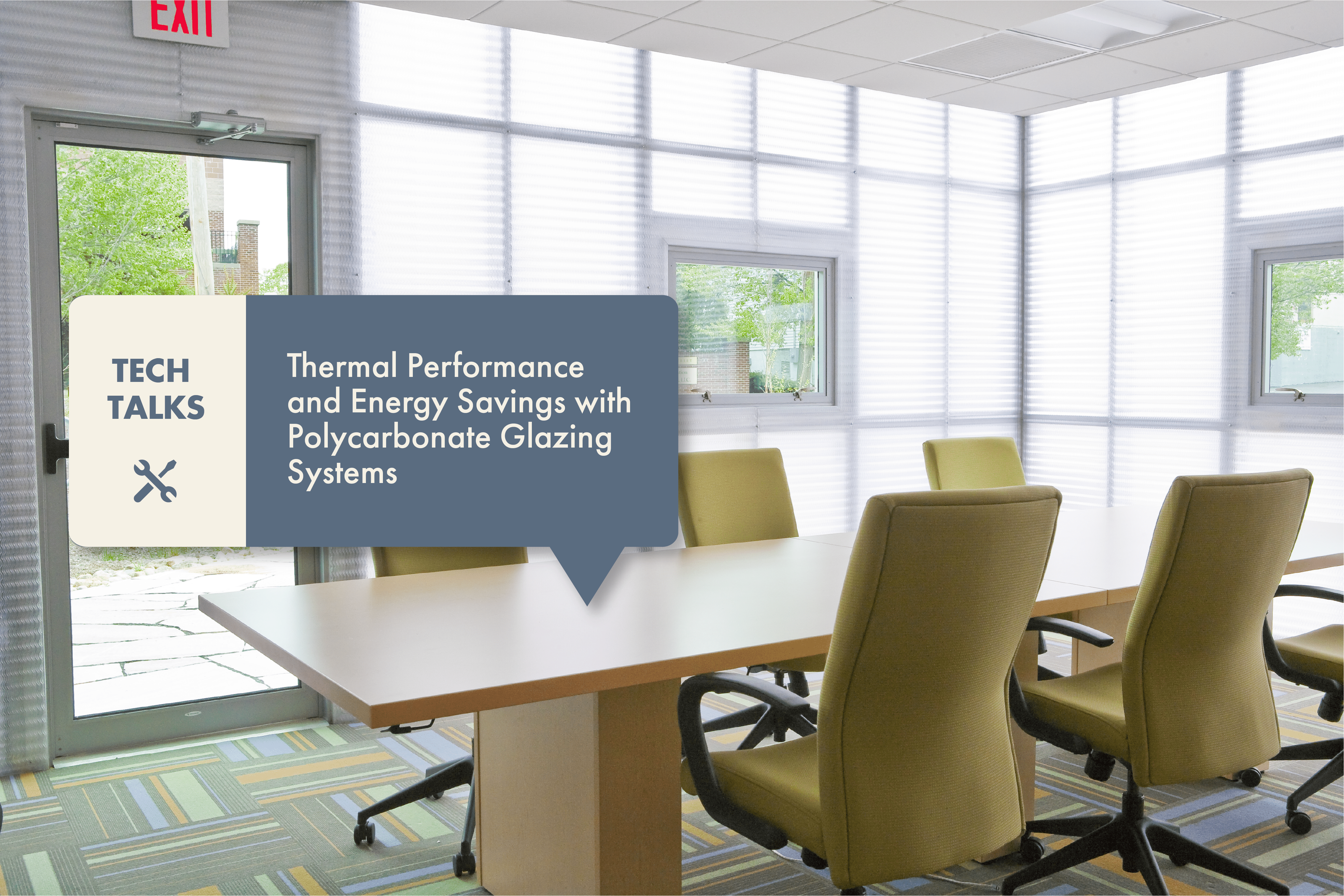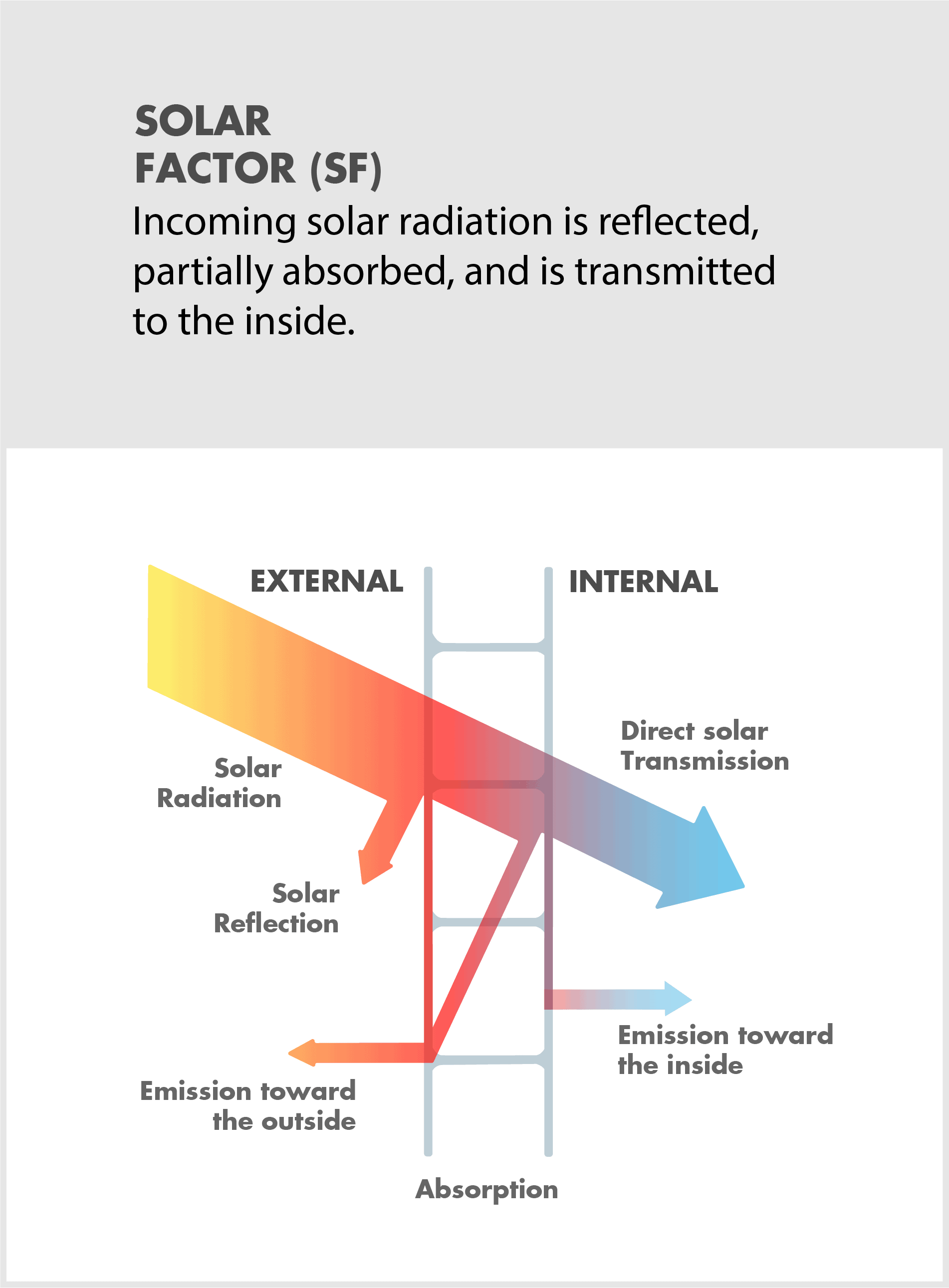Q: Do Cellular Polycarbonate Glazing Systems Offer Thermal Performance and Energy Savings?
One of the most prevalent complaints building owners and facility managers receive is that the occupants are too hot or too cold. This is especially true of tenants seated directly next to a window or other daylight opening. They want the daylight, but they also expect an ideal interior temperature.
As the design industry looks to reduce energy consumption, glass’ most appealing attribute is its ability to allow natural light to enter a structure. Still, glass can be heavy and prone to breakage/vandalism, so one should look at all alternative materials and possible glazing solutions for a given project—including polycarbonate glazing panels. After all, not many other building products can be delicate enough to transmit light, while possessing enough durability to withstand hurricane-blown debris.
The high insulating and thermal performance of CPG (Cellular Polycarbonate Glazing) systems can accentuate the benefits of daylighting, improve occupants’ comfort, and contribute to owner’s energy savings and overall building value.
What level of thermal insulation can Cellular Polycarbonate Glazing products provide?
Glazing materials’ insulating properties are measured as a U-value (also known as U-factor), indicating the flow of heat gain or loss with respect to the difference in outdoor and indoor temperatures. The lower the U-value, the better the insulating ability.
U-values for CPG products range from 0.40 for 16mm sheets, to as low as 0.17 for a 50mm sheet. These can be improved further with double-layer systems.
How is this measured?
The standard procedure for determining U-values in a CPG system is detailed in ANSI/NFRC 100-2017. Published by the American National Standards Institute and the National Fenestration Rating Council, ANSI/NFRC 100 relies on software to evaluate individual elements of the specified fenestration product’s frame, edge of glazing, and center of glazing.
The computer simulation then calculates the product’s U-value for winter conditions of 21 degrees Celsius (70 degrees Fahrenheit) on the building’s interior and -18 degrees Celsius (0 degree Fahrenheit) for the exterior temperature.
What is the difference between U-value and R-value?
Where U-value measure the rate of heat transfer and a lower number indicates better performance, the R-value measure resistance to heat transfer and a higher number indicates better performance.
R-values should be associated with a width measurement. If different materials comprise the total width, then an R-value should be noted for each material’s width; adding these together will provide an overall estimated value.
Remember that an R-value does not account for all of the daylighting assembly’s components and facets that are represented in U-value calculations.
For comparison, what is the U-value and R-value of a typical IGU?
For a large CPG wall system, the framing around the perimeter becomes negligible in a U-value computation, on a percentage of total area. On average, a U-value of 0.26 and an R-value of 3.84 can be expected for a CPG system with a 25 mm (1 inch) width.
In contrast, a U-value of 0.48 and an R-value of 2.08 would be typical of a double-pane IGU of the same width.
Remember, lower U-values and higher R-values indicate better performance.
About EXTECH
As a leading provider of daylighting systems, EXTECH receives many questions specifically on cellular polycarbonate glazing. These questions range from the time it takes to install the systems, the cost of hiring installers/glaziers, modifications to the system on-site, etc. We understand that Architects, Facility Managers, General Contractors, and Glaziers are looking for answers relevant to their scope of work.
To better address these topics, we will be publishing a series of quick, detailed, and to the point information to help YOU understand the ins and outs of Polycarbonate Daylighting Systems.






